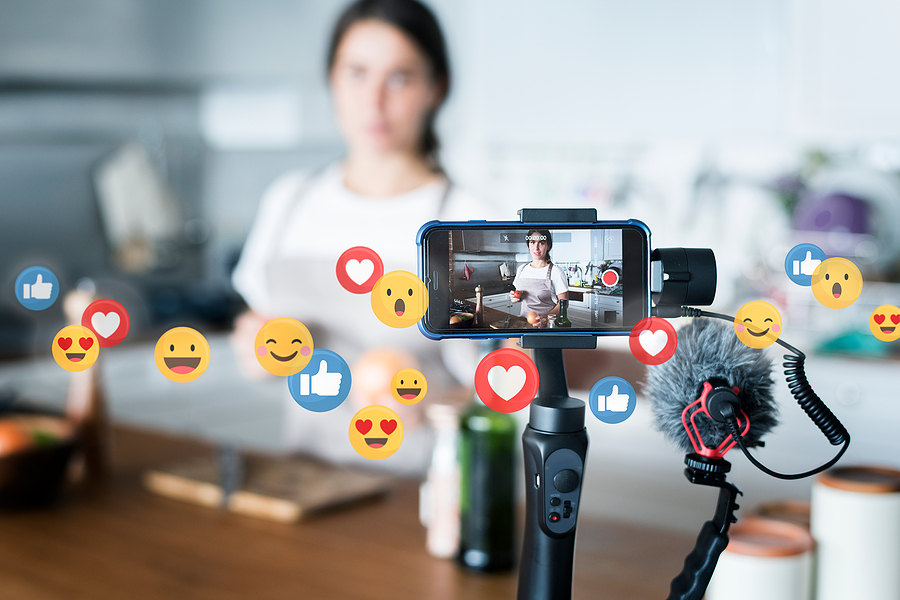
The Culture Driven Reset of Social Media
February 14th, 2024 Posted by Emergent brand messaging, Culture change, Culture trend, Higher Purpose, Mission, Social media, Social proof, storytelling 0 comments on “The Culture Driven Reset of Social Media”Social responds to a world on fire…
When social media first arrived nearly 20 years ago (time flies doesn’t it!) following the birth of Facebook, it didn’t take that long for the vital channel to commercially evolve, monetize itself and become an extension of brand broadcast strategy via paid distribution. However, the world has changed and with it the ‘best practices’ approach to social channel strategy is recalibrating. Are you ready?
Here we will examine the evolution and provide guidance on how to embrace the reset of what social is intended to be and how your brand should plan within it.
Culture influences consumer behavior
Culture change is coming more rapidly than ever before and it’s having a profound impact on how brands behave in the marketplace. Because, as always, consumers hold sway while they mirror and appropriate cultural trends. For example, witness the rapid ascension of —
- Values-driven consumer behavior.
- Escalating conscious consumption.
- Alignment between people and brands on mission and beliefs.
- Growing role of brand higher purpose, empathy and deeper meaning.
Integrating culture with social strategy
It’s time to integrate culture trends within your social plans and strategies. That means your brand must work hard to understand, then embrace, and also consider how to lead cultural change.
Think for a moment about what’s going in around us right now. Did any of you observe the incredible Instagram reels of raging floods and devastating mudslides in southern California? Don’t know about you, but I’ve never seen anything remotely horrific like that before in the SoCal area. It was truly alarming. Also symptomatic of what’s influencing culture shifts around us now, and it is having a profound impact on social media.
Here’s the culture influence impact gallery –
- Chaotic climate developments, news of same and extreme weather events.
- Elections that might appear to challenge the foundations of democracy.
- Looming concern of AI disruption on the horizon.
- Wars, more wars, attacks and terrorism on the rise.
- Pervasive feeling of lost control over our lives and the world around us.
The only thing that’s certain is growing uncertainty
- The key insight: Social communities are an anchor in the storm to help users navigate a world on fire around them. The shared interests, passions, attitudes of like-minded people all coalesce with those who seek common ground and to make sense of their lives.
Up to this point, social strategy was defined mainly by branded content and paid distribution of product-centric stories and promotions. It represented a co-mingling of branded content, community and media spend/traction imperatives.
Now with the influence of culture trends, brands need to build a more meaningful, relevant value exchange in return for consumer time and attention.
Move from brand first to audience first content and narratives
Social strategy is shifting to embrace authentic, lo-fi, real and more intimate content designed to both inform and entertain – and created intentionally for organic traction. It’s a de-emphasis on measuring reach and eyeballs in favor of qualitative assessments, shares and meaningful interaction. People want, maybe even need, to participate in communities of shared passions and fandom. It presages a rise in the importance of user generated content that will be unscripted, unpolished and also unpredictable.
Here are some tactical considerations to fold into your thinking:
Nano-moments and empathetic moves: A North Face outerwear user on a mountain expedition expressed a complaint on social media about their jacket underperforming in a critical setting. North Face leapt into action and managed to deliver a new replacement coat to the customer on a mountain top. Great social moment and expression of zealous customer care.
Rise of the creator economy: micro-influence from creators is redefining the social channel engagement plan. #booktok, #healthtok and #cleantok are all symptomatic of niche creator communities where innovation and brand collabs will become increasingly important. Coke recently invited creators to use AI inspired tools to share unique holiday themed images.
Video, video and more video: Did you know that 58.5% of time spent on social is spent consuming videos? We’re moving from ad cutdowns for social consumption to video intentionally designed to instruct, guide and coach in an “edutainment” format. As a natural extension of this development, longer form videos will gain favor like this lively, fun effort on behalf of Hilton Hotels.
The role of AI in social: AI is being deployed to automate and elevate community monitoring and in doing so to support social teams with intel on social behaviors, sentiment and social listening. AI will also be used to facilitate more customized content delivery and enable advanced content creation like Coke’s Real Magic image effort cited above.
LinkedIn and B-to-B outreach: LinkedIn has a grip on B-to-B social interaction. It is a great environment to showcase company culture and staff expertise. Nearly 75% of B-to-B companies already leverage CEOs, academics and doctors for content creation there. We expect employee engagement on the platform to grow, working to position staff as opinion leaders with insider knowledge.
Uncertainty in the world around us is changing the value proposition for social channels, with a call to level-up on community building. It offers a safe harbor at a time when people want to engage with others who share their specific passions. The essential strategic shift is from brand first, audience second thinking to the reverse of that point of view. Goes without saying that properly curated and fed, social channel value in the brand marketing playbook is growing while the content game plan targets relevance.
If this post gets you thinking about social strategy and you’d like to ask questions about your brand’s approach to optimizing your social community plans, use this link to share your thoughts and start an informal conversation.
Looking for more food for thought? Subscribe to the Emerging Trends Report.
Bob Wheatley is the CEO of Chicago-based Emergent, The Healthy Living Agency. Traditional brand marketing often sidesteps more human qualities that can help consumers form an emotional bond. Yet brands yearn for authentic engagement, trust and a lasting relationship with their customers. Emergent helps brands erase ineffective self-promotion and replace it with clarity, honesty and deeper meaning in their customer relationships and communication. For more information, contact [email protected] and follow on Twitter @BobWheatley.




